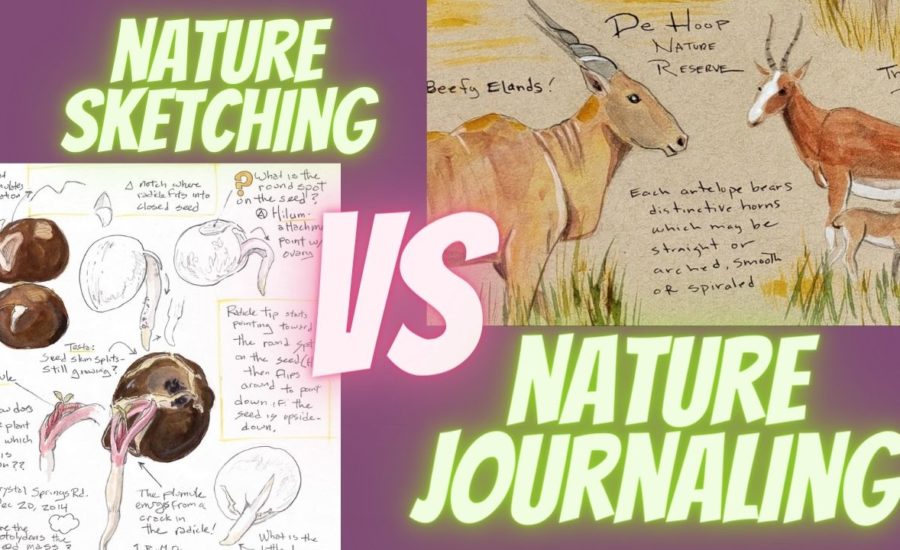Have you ever wondered what is the difference between nature journaling and nature sketching?
Nature sketching and nature journaling are two popular ways to connect with nature and record observations of the natural world. While they may seem similar at first glance, there are some key differences between the two practices. Let’s explore the similarities and differences between nature sketching and nature journaling. We will use Christine Elder’s and John Muir Laws’ website as examples. In a recent interview with Christine Elder she emphasized that what she does is “Nature Sketching.” And of course, John Muir Laws (aka Jack) is one of the biggest teachers and promoters of nature journaling. So let’s dive in!
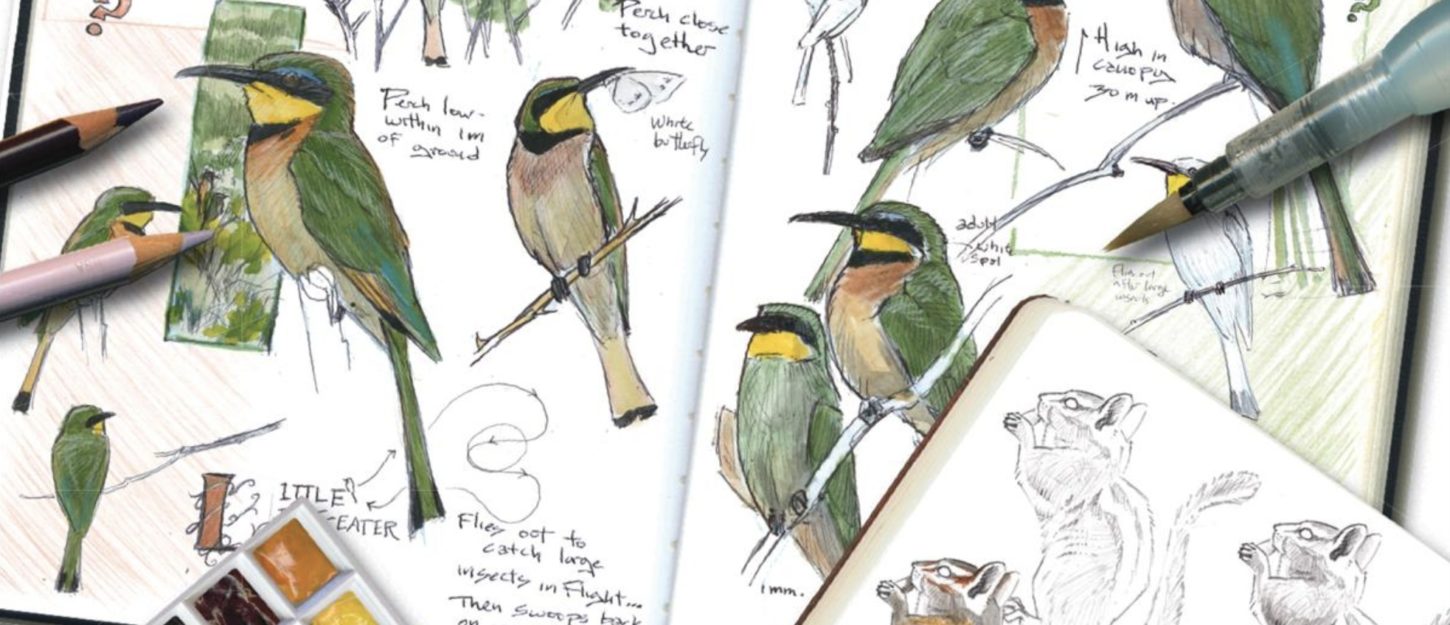
Defining Nature Sketching and Nature Journaling
Firstly, let’s define what nature sketching and nature journaling are. Nature sketching is the practice of creating drawings of animals, plants, and landscapes in a natural setting. It is an art form that allows individuals to capture the beauty and intricacies of the natural world. Pencils, watercolors, and other media may be used. On the other hand, nature journaling is the practice of recording observations of the natural world in a journal or notebook. It has an explicit focus on learning. There is an attempt to de-emphasize the “pretty picture.” This doesn’t mean that nature journaling can not produce pretty pages. But that is a debate for a future article. For example, there are nature journaling styles that embrace the aesthetic page. Alex Boon is a good example of this school of thought (learn more about his aesthetic nature journaling here).
Now, let’s explore some similarities between nature sketching and nature journaling. Both practices are ways of connecting with nature and cultivating a deeper appreciation for the natural world. They both require individuals to slow down and observe their surroundings with intention and curiosity. They can also both be used as tools for scientific observation and documentation of the natural world.
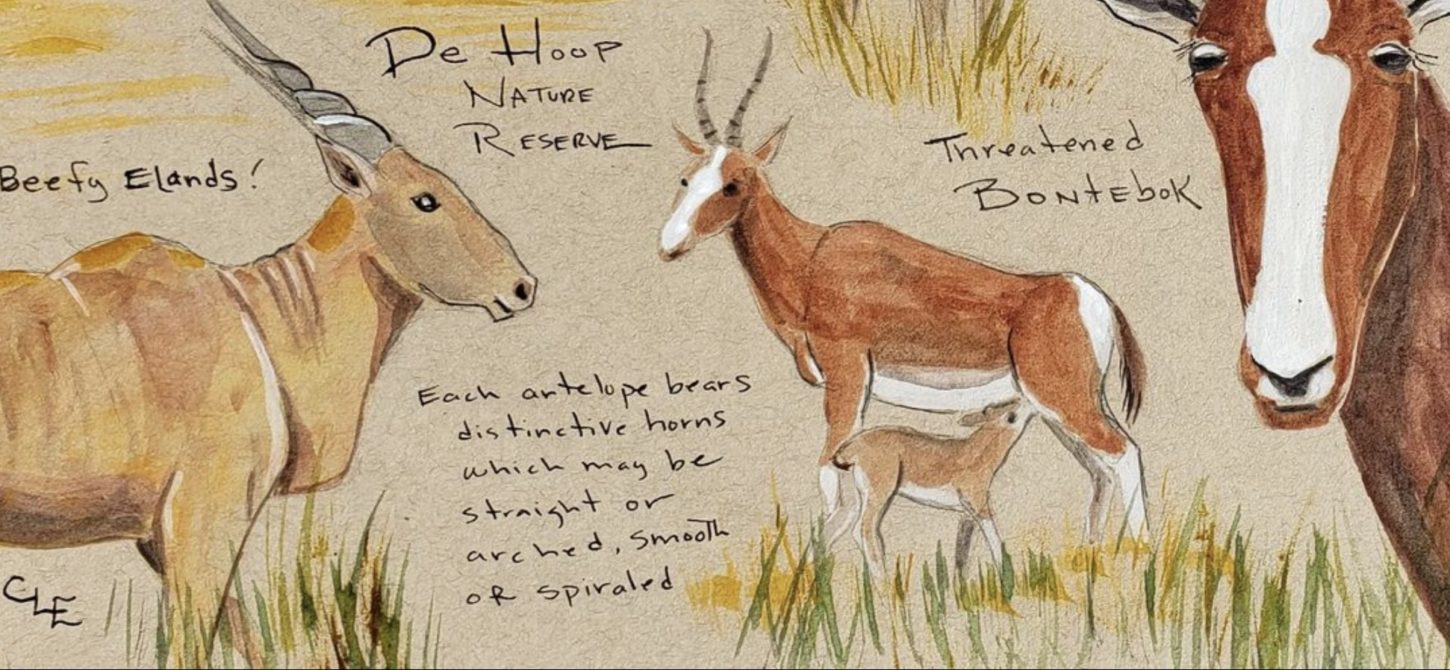
What are the Differences?
One major difference is the role of artistic skill. Nature sketching is an art form that emphasizes the artistic side. On the other hand, nature journaling does not require any artistic skill. Anyone can start a nature journal, regardless of their artistic abilities. This makes nature journaling a more accessible practice for individuals who may feel intimidated by the idea of creating art. It’s true that nature sketching sets a low bar for artistic ability compared to other art forms such as plein air painting. Nevertheless, the focus is artistic.
Another difference between nature sketching and nature journaling is the focus of the practice. Nature sketching is primarily focused on capturing the beauty and details of the natural world through art. It is an aesthetic practice that is driven by the desire to create beautiful and realistic representations of nature. On the other hand, nature journaling is focused on observation and documentation. It is a more scientific practice that is driven by the desire to record accurate and detailed information about the natural world. Nature journaling often contains more writing combined with sketches and drawing. Some people think that the presence of writing is what distinguishes nature journaling from nature sketching and nature drawing.
Examples of Nature Sketching and Nature Journaling
Now, let’s take a closer look at Christine Elder’s website and how it showcases the practice of nature sketching. Christine emphasizes the therapeutic benefits of nature sketching, including its ability to reduce stress and promote mindfulness. She also highlights the importance of connecting with the natural world through art, stating that her goal is to “inspire you to see and capture the beauty around you, no matter where you are.” Her website features a wide range of her beautiful sketches of animals and plants.
Christine’s website also features information about her educational offerings, which include workshops, retreats, and online courses focused on teaching others the art of nature sketching. Her workshops and courses are designed to be accessible to individuals of all skill levels, and she encourages participants to explore their creativity and develop their own unique style. Christine’s website is a valuable resource for anyone interested in nature sketching, providing inspiration and guidance for individuals looking to deepen their connection with nature through art.
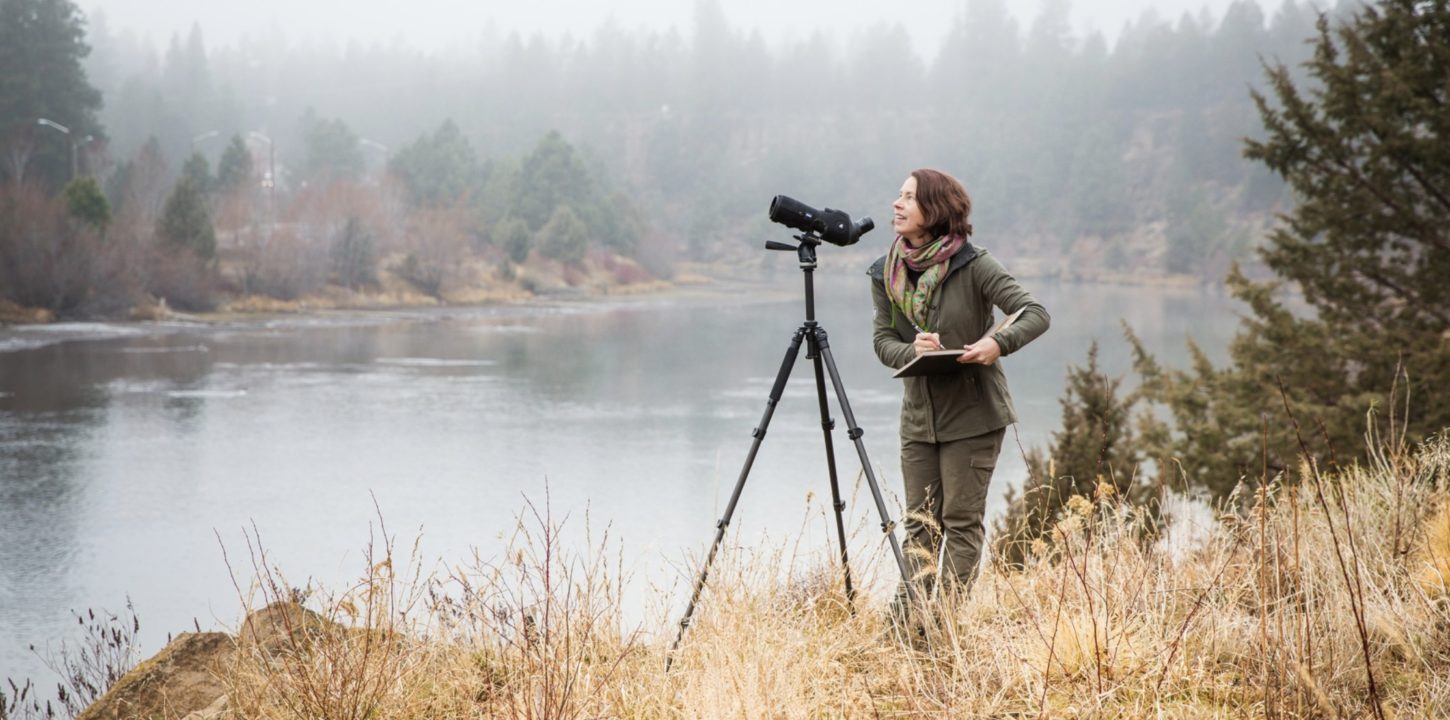

John Muir Laws’ Website
Now, let’s turn our attention to John Muir Laws’ website and how it showcases the practice of nature journaling. Jack is a naturalist, educator, and artist who is passionate about promoting nature journaling as a way to connect with the natural world and develop a deeper understanding of the environment. His website, johnmuirlaws.com, is a comprehensive resource for individuals interested in nature journaling.
Jack emphasizes the scientific benefits of nature journaling, including its ability to develop observational skills and increase scientific literacy. He encourages individuals to use their journals to record detailed observations of the natural world, including the behavior of animals, the growth patterns of plants, and the changing of the seasons. His website features a wide range of resources for nature journaling, including free tutorials, instructional videos, and downloadable resources.
One key feature of Jack’s website is his emphasis on the importance of developing a habit of nature journaling. He encourages individuals to make nature journaling a regular practice, and provides guidance on how to incorporate it into daily life. He also emphasizes the importance of community, encouraging individuals to share their work and connect with other nature journaling enthusiasts.
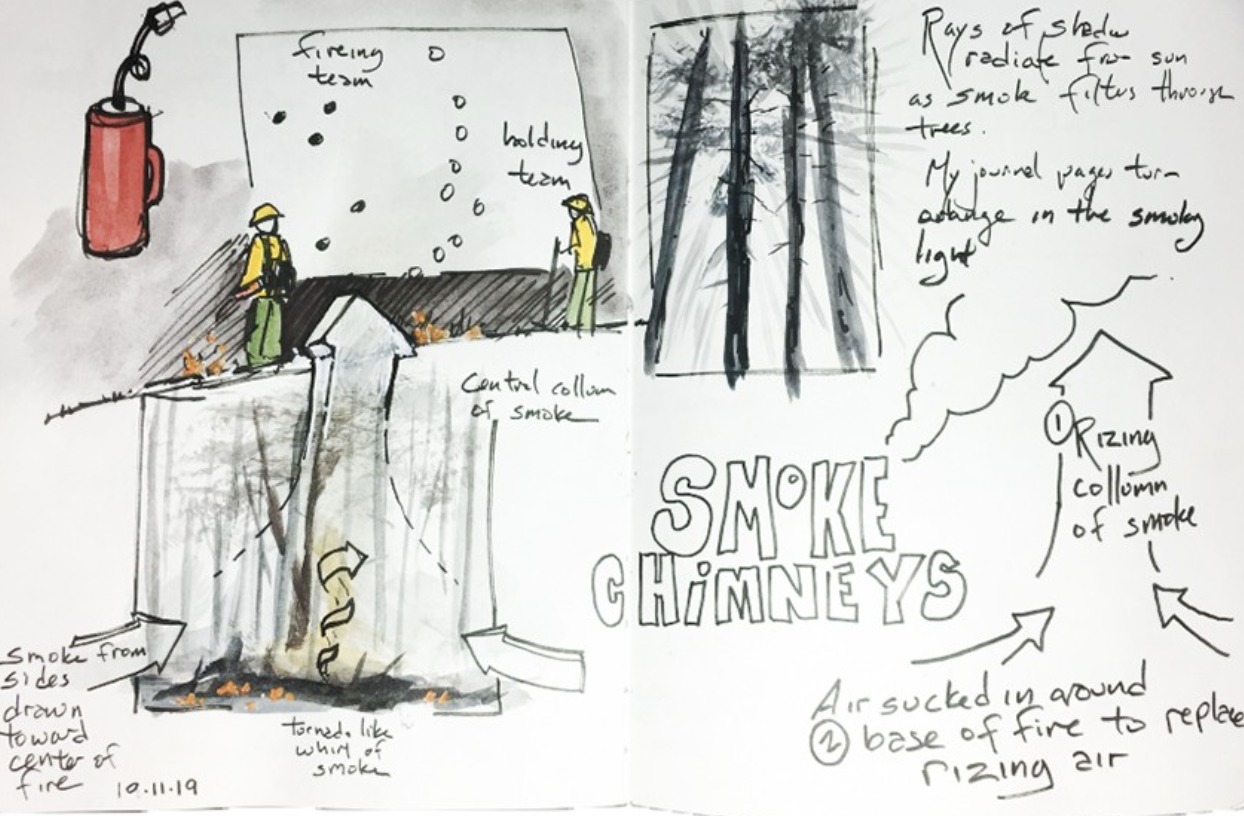
Summary
If we compare nature sketching and nature journaling, we can see that both practices have unique benefits and appeal to different types of individuals. Nature sketching is an art form that requires some degree of artistic skill and is primarily focused on creating beautiful representations of the natural world. It can be a therapeutic practice that promotes mindfulness and deepens one’s connection with nature. Nature journaling is a more scientific practice. It emphasizes the importance of detailed observation and documentation. It can help individuals develop a deeper understanding of the natural world and increase their scientific literacy.
In conclusion, nature sketching and nature journaling are two valuable practices for connecting with the natural world. They have unique differences in terms of the level of artistic skill required and the focus of the practice. By exploring the resources provided by Christine Elder and John Muir Laws, individuals can gain a deeper understanding of these practices and find the one that best suits their interests and abilities. Whether it’s through the beauty of art or the precision of observation, nature sketching and nature journaling offer valuable opportunities for individuals to connect with nature and develop a deeper appreciation of the environment.
Want to see more examples of Nature Sketching?
Debby Kaspari is one of my favorite artists. She uses the term nature sketching to describe what she does. Here is an interview with her. You can also see more of her work on her very cool blog called Drawing the Motmot.
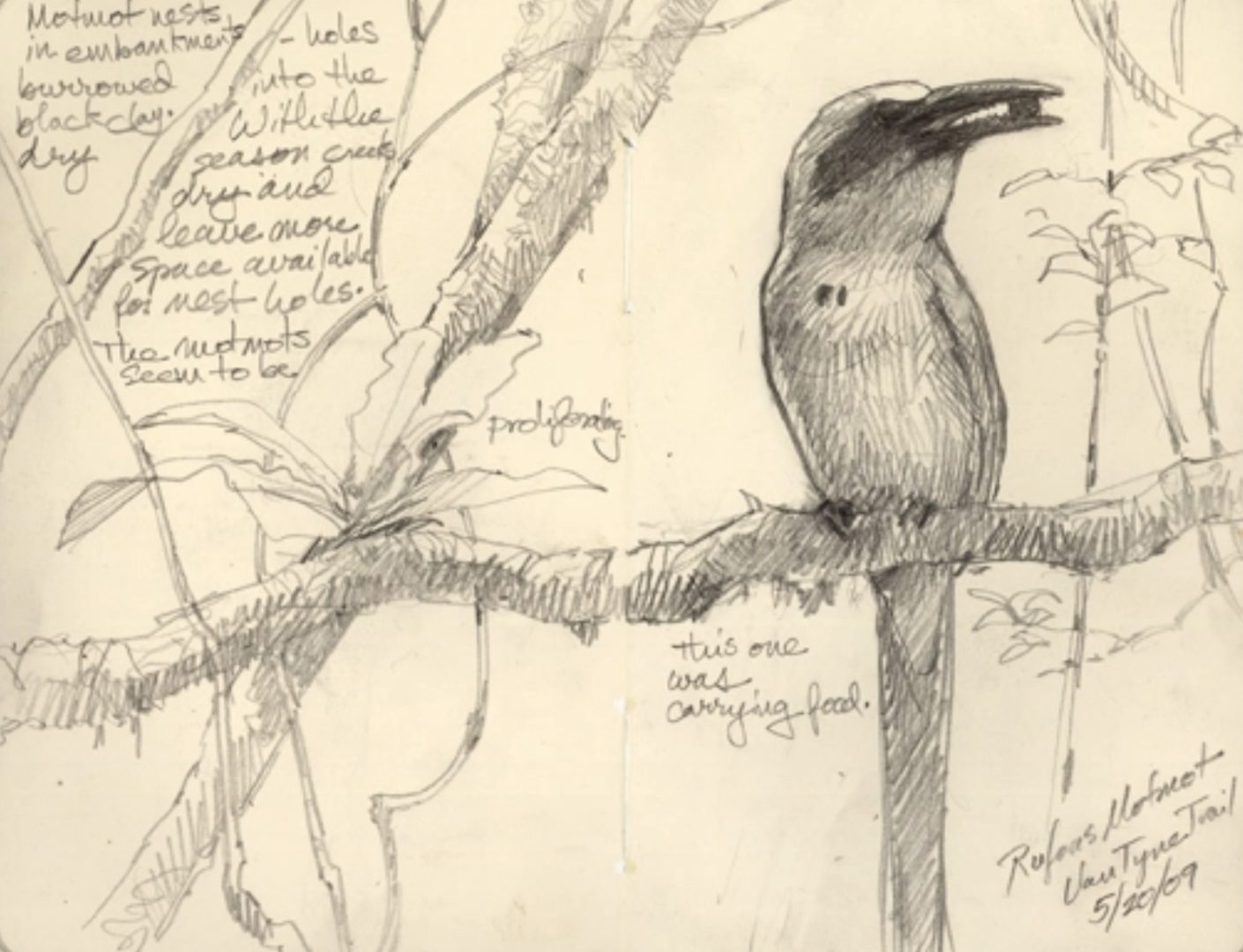
But what if I’m completely new to nature journaling?
One of the great things is that you don’t need to be an expert at nature journaling to get started. In fact, there are many benefits of nature journaling while you are a beginner. Nature journaling is focused on learning not knowing. The main enemy of learning is not ignorance but the illusion of knowledge. However, it might take some practice because this is not how most people think. The best place to start is “I notice, I wonder, it reminds me of.” Let et curiosity be your guide.
Regardless of your experience, we got you right here. Below are links to some super resources for beginner nature journalers.
